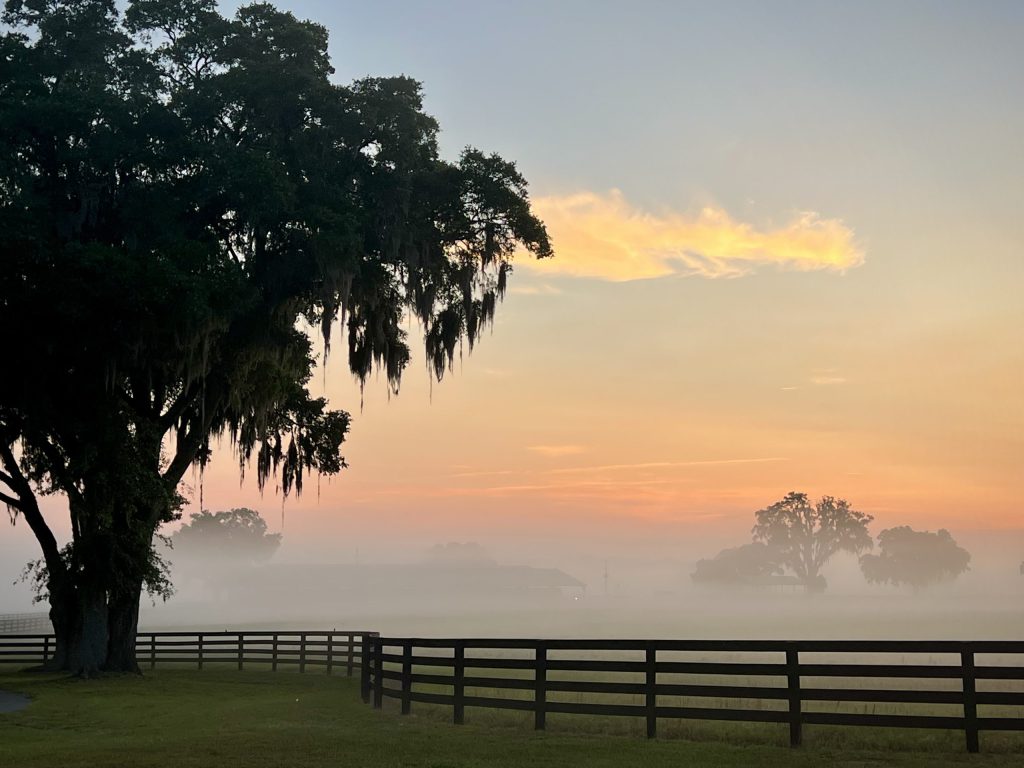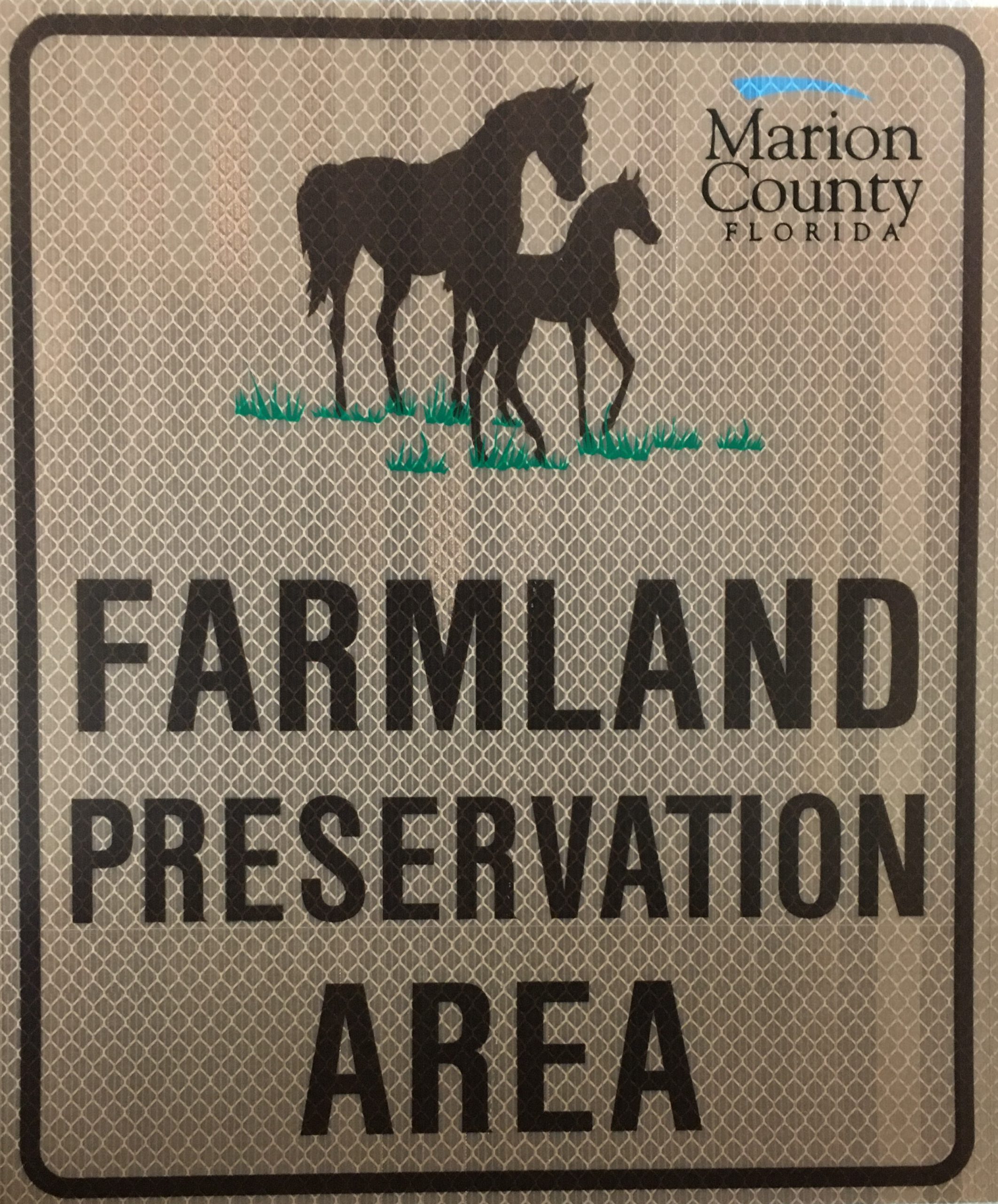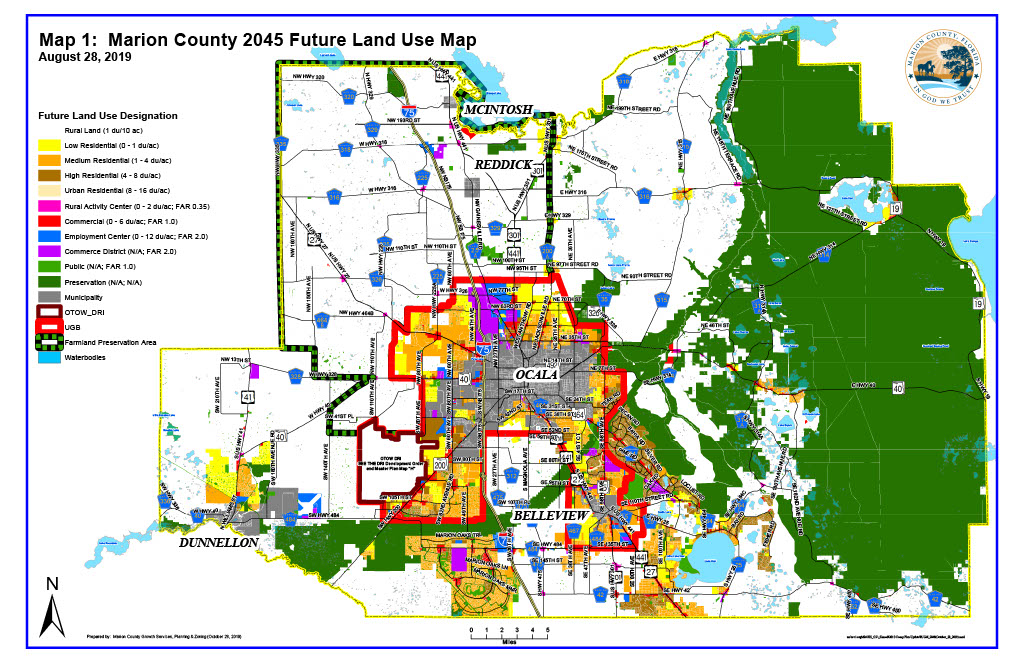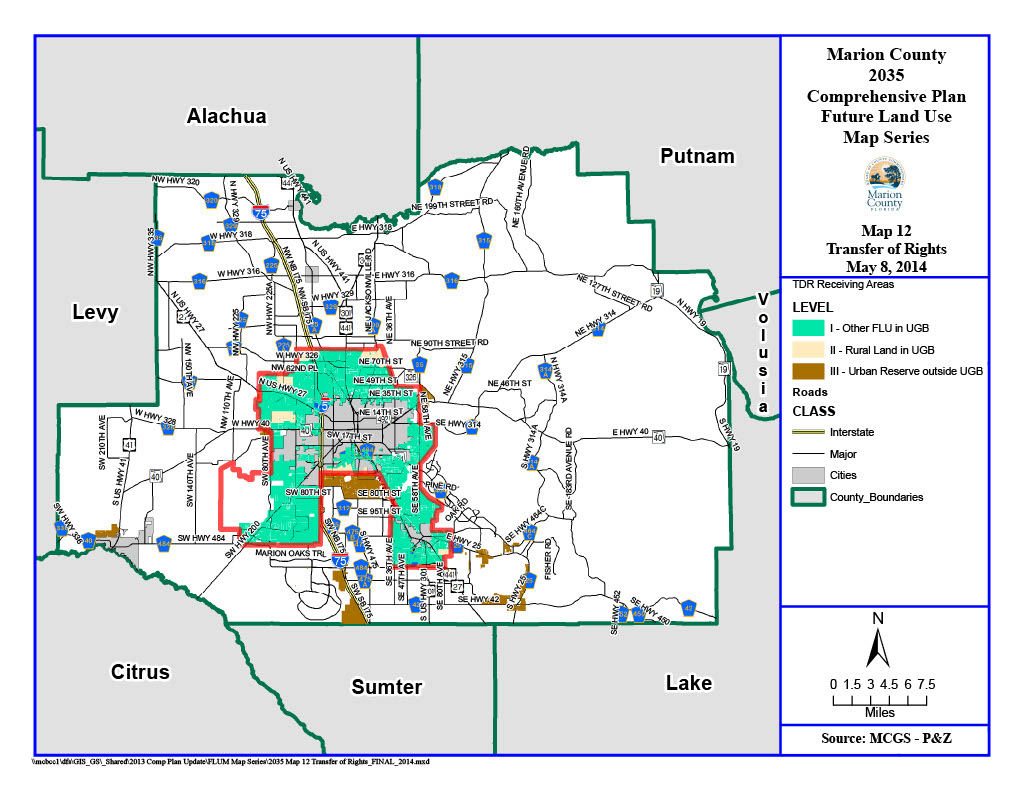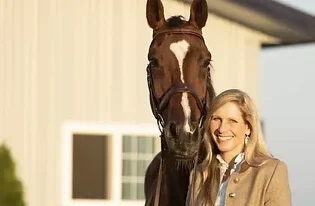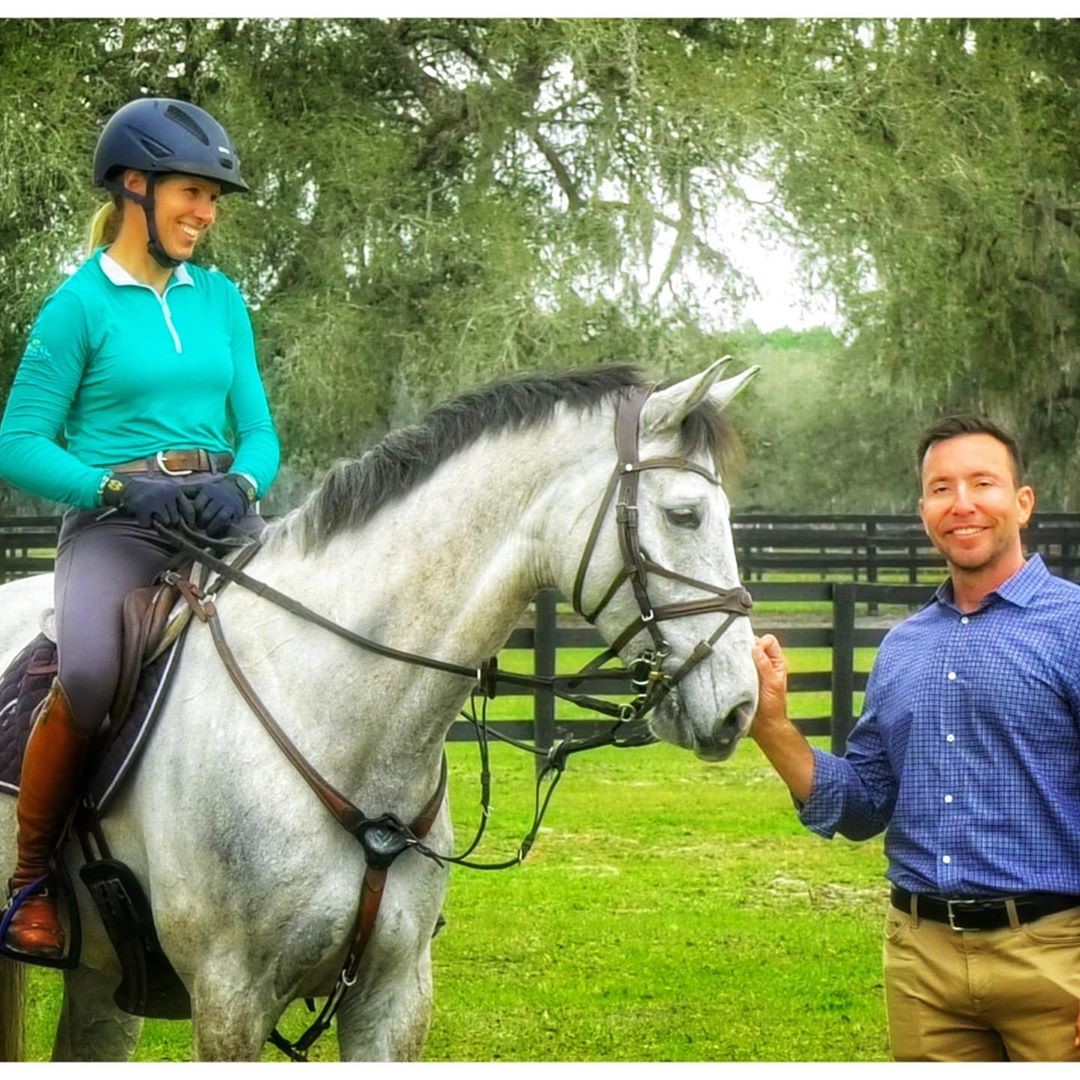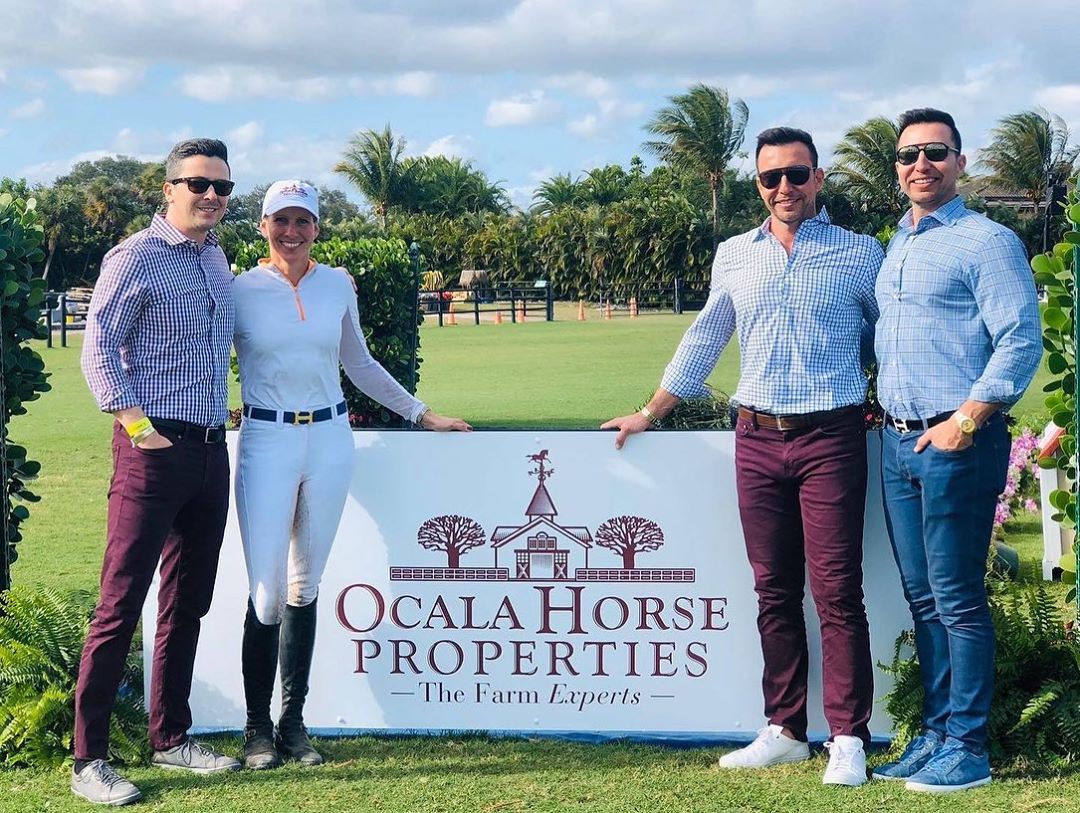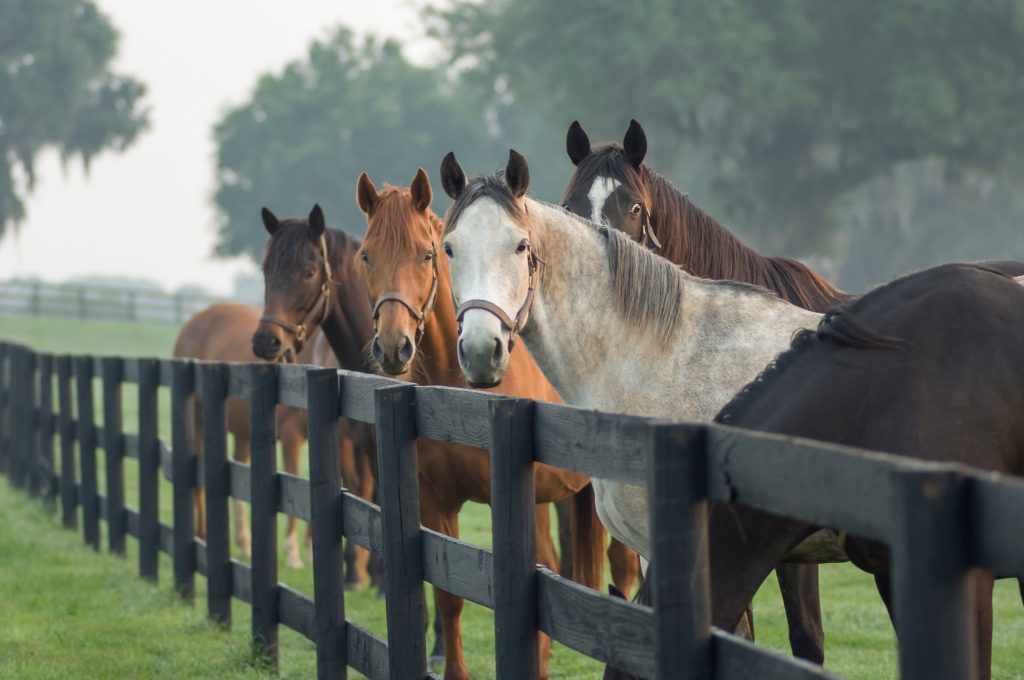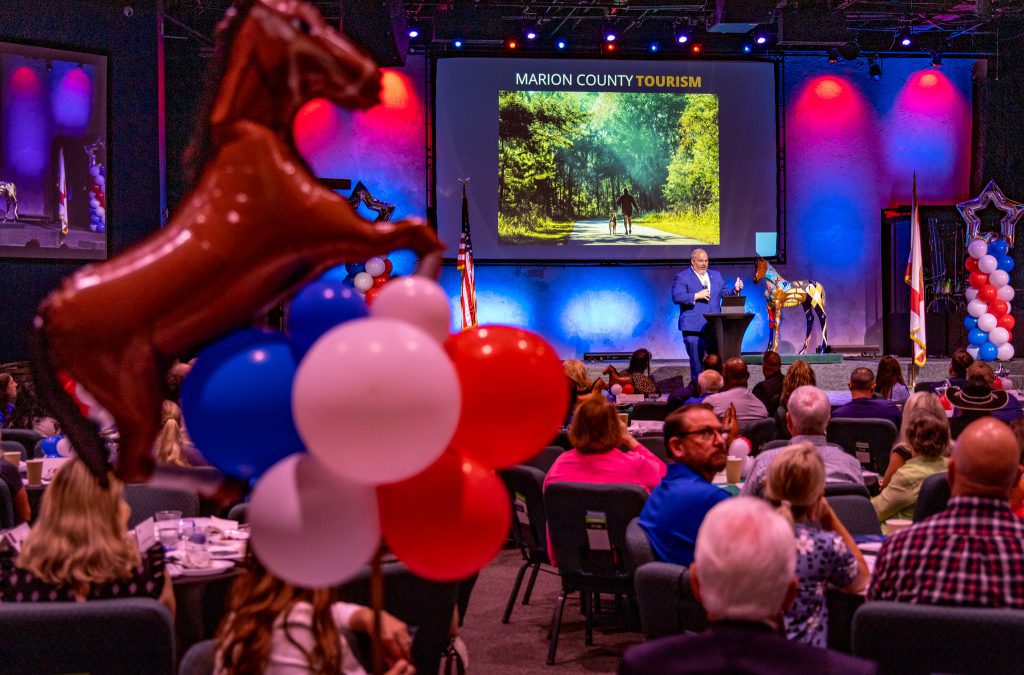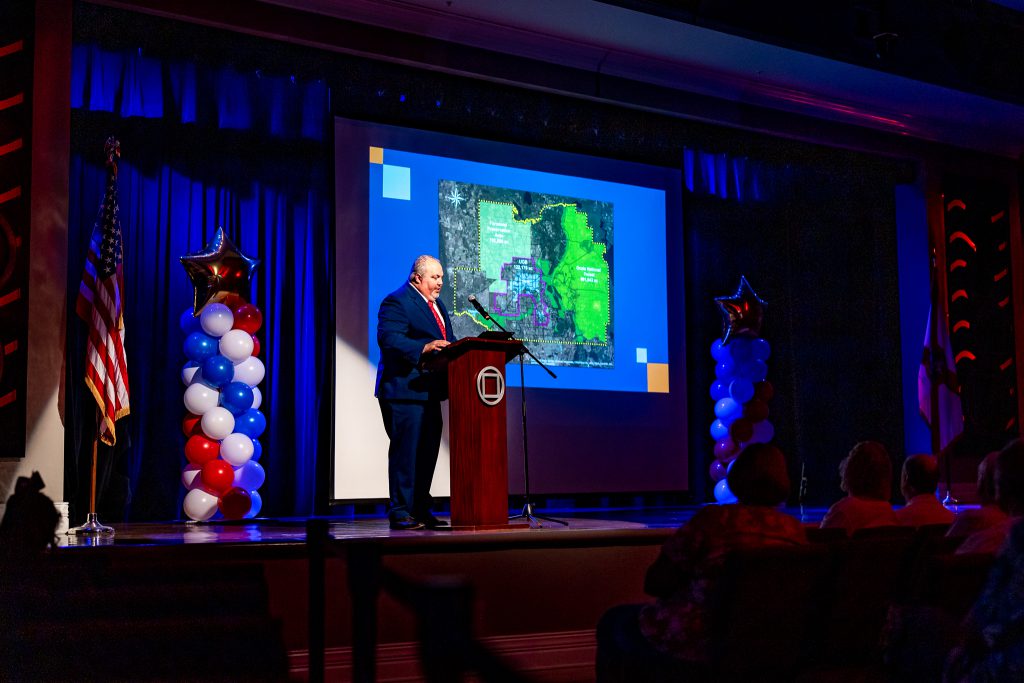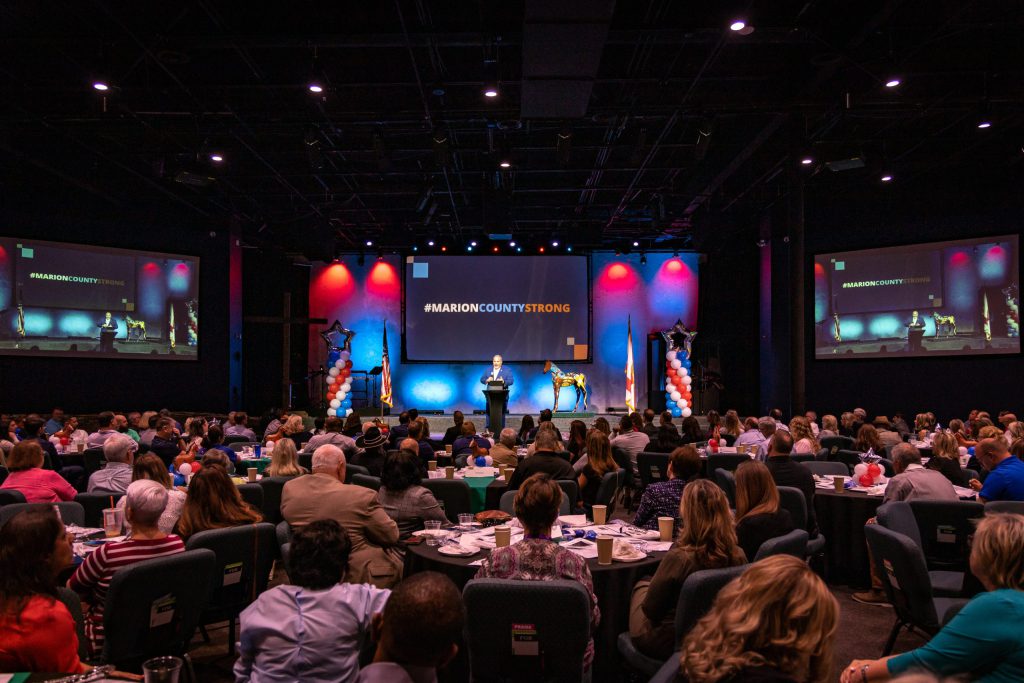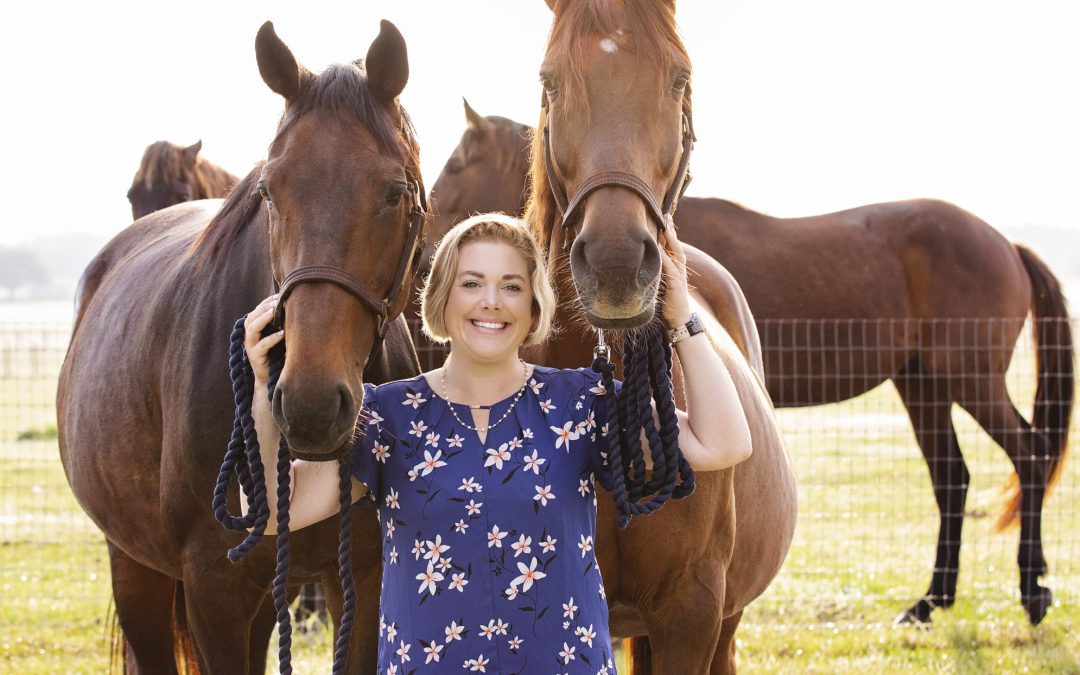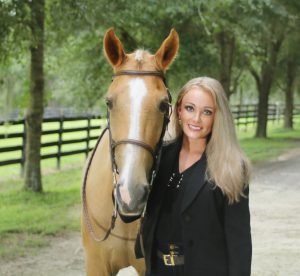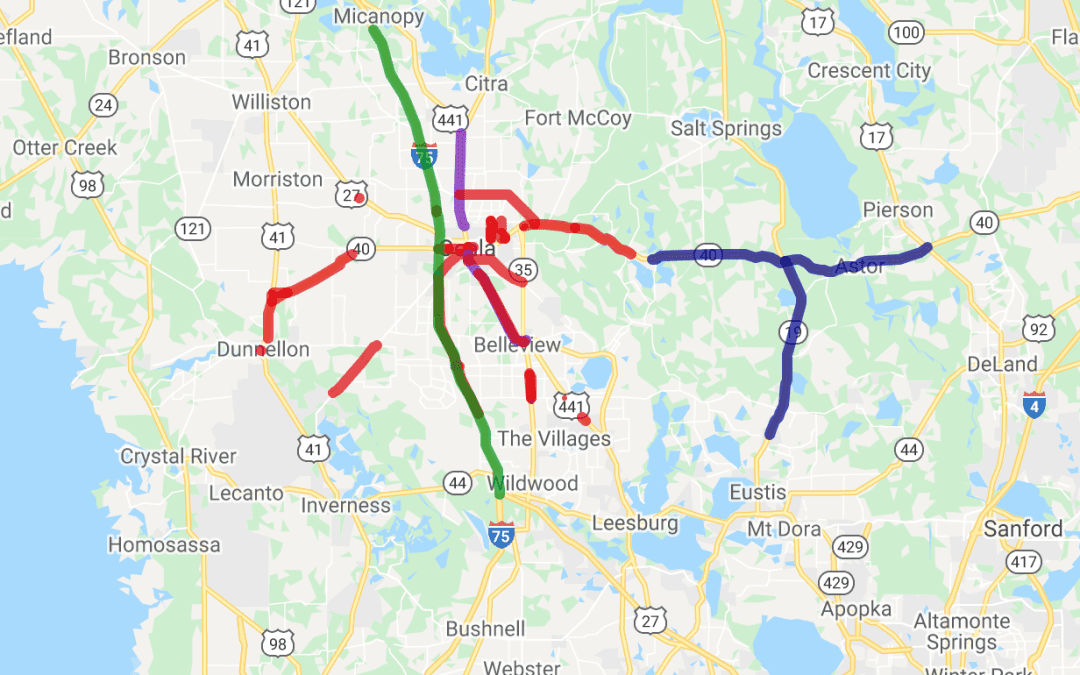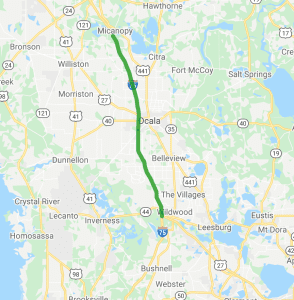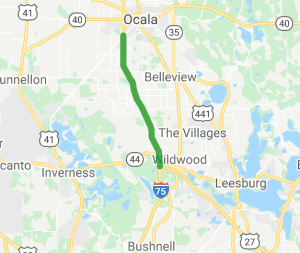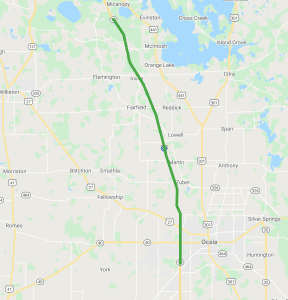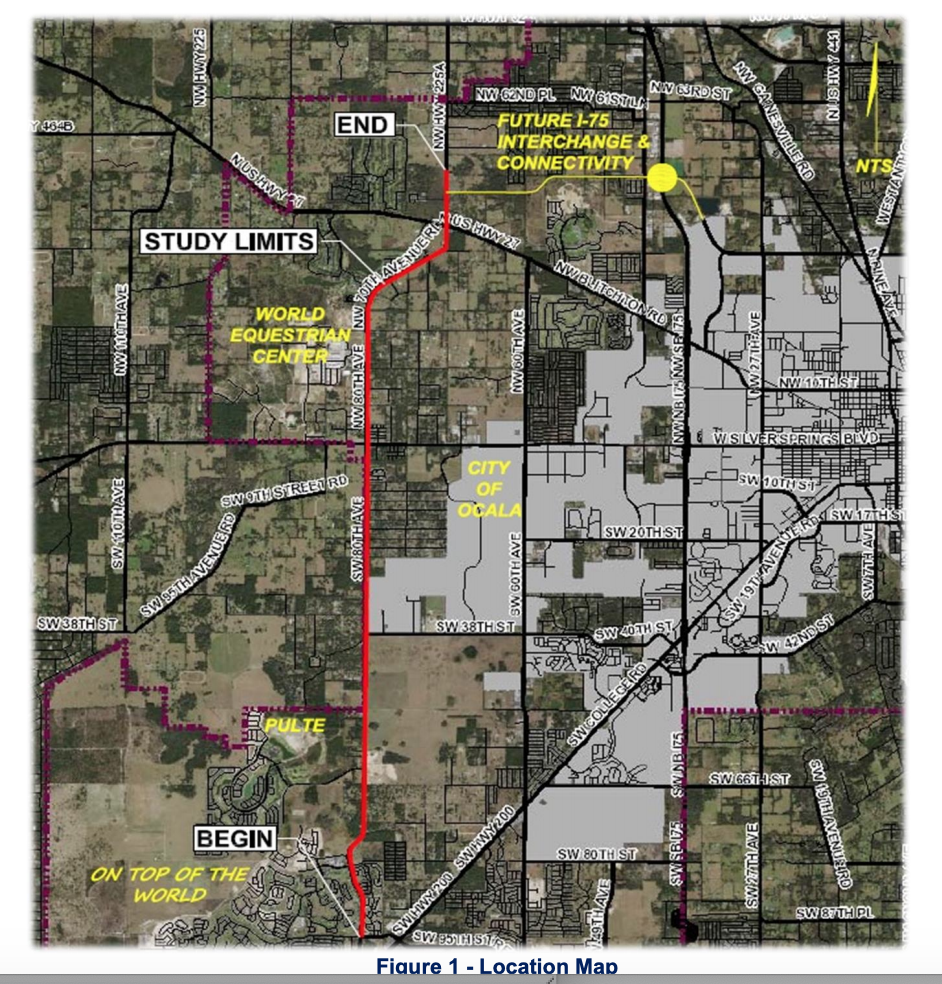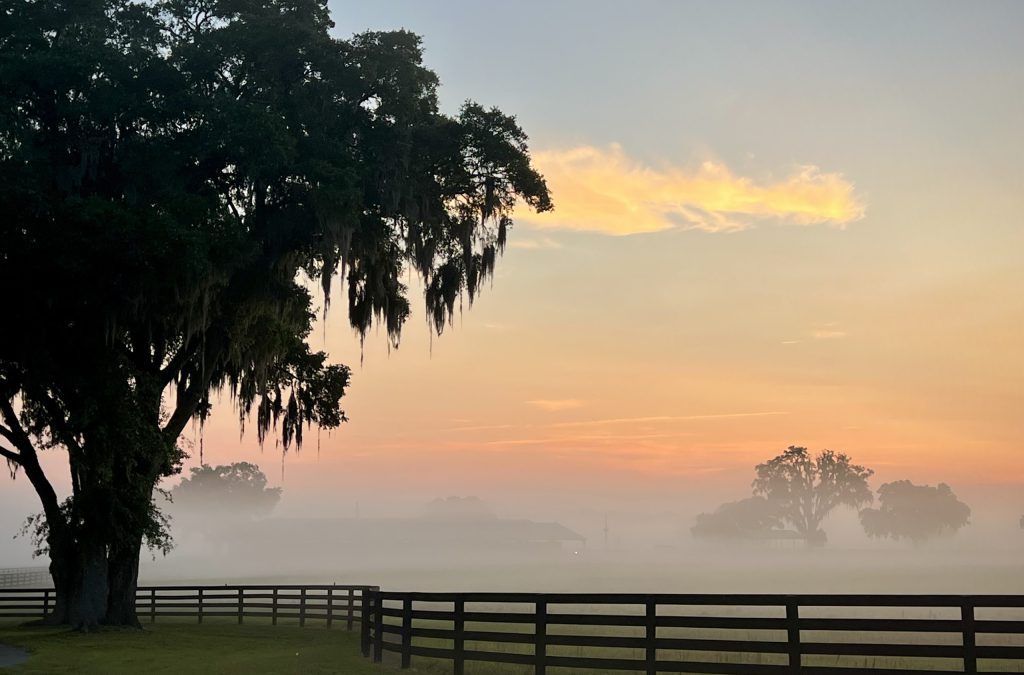
Just What Is The Farmland Preservation Area?
Marion County is home to nearly 4,000 farms including over 1,200 horse farms. Most of these horse farms are in the Farmland Preservation Area. Of Marion County’s 1 million acres of land, the Farmland Preservation Area (FPA) encompasses just under 200,000 acres in the northwest portion of the county. While the FPA is called a preservation area, it’s not protected in the same way government owned lands like the Ocala National Forest are protected. The Comprehensive Plan and Land Development Regulations are guidelines that define rural character and establish compatible uses in the FPA, but they do not prevent subdivision of land or stop development that is deemed compatible by the Board of County Commissioners (BOCC).
The boundaries of the FPA, and the rules that govern it, are at the discretion of the BOCC. While all five current Commissioners are strong supporters of the FPA, as development pressure increases, additional tools are available to help protect the rural character and preserve compatible uses in the FPA.
Preservation and growth have to coexist strategically or neither succeeds. The tools that provide permanent protection for the FPA are in the hands of private landowners.
Conservation County
Marion County is one of the largest geographic counties in Florida. In round numbers, it covers over 1 million acres. About forty-percent of this acreage is protected from development.
For example, the Marion County portion of the Ocala National Forest covers about 320,000 acres and is owned by the US Forest Service. Established in 1908, it is the oldest national forest east of the Mississippi River and the southernmost national forest in the continental US. While it is a national forest, there are private and government in-holdings inside its boundaries.
Another example of protected land is Silver Springs State Park, which covers about 4,000 acres and contains one of the largest artesian springs ever discovered. It is owned by the State and managed by the Florida Department of Environmental Protection, which oversees 175 state parks, trails and historic sites as part of the Florida State Parks system. In the City of Ocala, an example of protected land is the Fort King National Historic Landmark, which covers about 40 acres and is jointly owned by the City and County.
Of Marion County’s 1 million acres, the Farmland Preservation Area encompasses just under 200,000 acres in the northwest portion of the county. By comparison, the Urban Growth Area is about 125,000 acres, not including the City of Ocala. The remaining 400,000 acres is a patchwork of rural lands and municipalities such as The Villages, Dunnellon and Belleview, and towns, like McIntosh and Reddick.
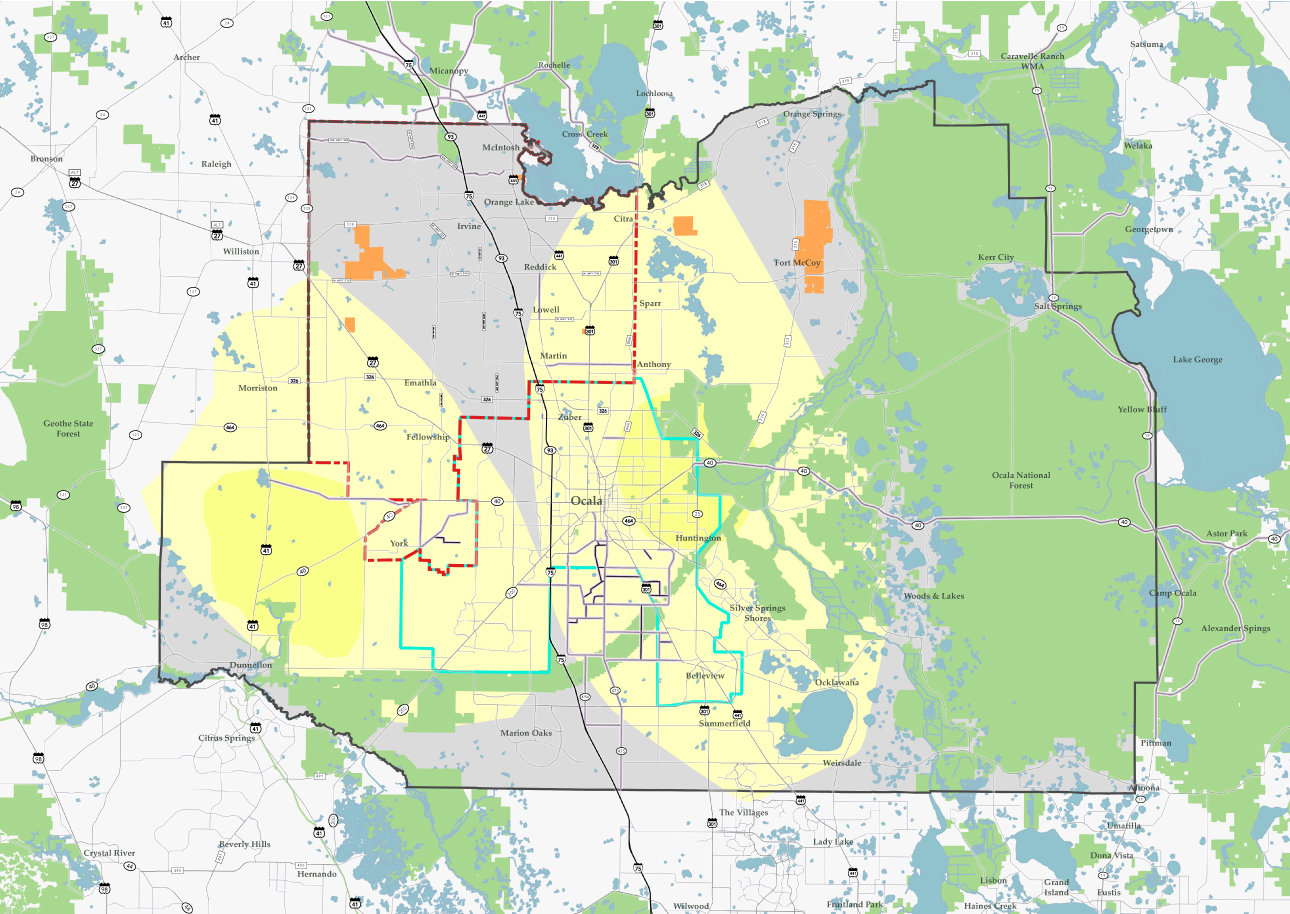
The Farmland Preservation Area is designated by the red line, the Urban Growth Boundary by the blue line, Public Conservation lands are in green, and the orange areas are privately owned lands that have been conserved with Marion County’s Transfer of Development Rights program with a conservation easement.
The Farmland Preservation Area Is Born
In 2004, the County adopted several amendments to the Future Land Use Element to create the Transfer of Development Rights (TDR) program to protect farmland and other natural resources. Then, in 2005, the Farmland Preservation Area (FPA) was created by the County to serve as the sending area for the TDR program.
There are three main elements to help preserve farms in Marion County:
- a designated boundary on the County’s Future Land Use Map for the FPA,
- Objective 3.3 in the Comprehensive Plan that defines compatible rural uses in the FPA, and
- a voluntary Transfer of Development Rights (TDR) program to incentivize landowners to protect their land with a conservation easement.
The first two elements, the boundaries of the FPA and the policies that govern it, are at the discretion of the BOCC. The third element, the Transfer of Development Rights (TDR) program, lies in the hands of private landowners. The TDR program is what makes the FPA a true Preservation Area, but it requires private landowners to participate in the program.
How does the Farmland Preservation Area (FPA) protect land?
While the FPA is called a preservation area, it’s not protected in the same way that government lands like the Ocala National Forest are protected. The Comprehensive Plan and Land Development Regulations are guidelines that define rural character and establish compatible uses in the FPA, but they do not prevent subdivision of land or stop development that is deemed compatible by the Board of County Commissioners.
The FPA boundary is a line drawn on the County’s Future Land Use Map and is described in Objective 3.3 of the Comprehensive Plan as “intended to encourage preservation of agriculture as a viable use of lands and an asset of Marion County’s economy and to protect the rural character of the area.”
Policy 3.3.1 defines the Elements of Rural Character: “The County shall preserve and protect rural and equestrian/agricultural character within the Rural Lands, specifically the Farmland Preservation Area, by requiring that all appropriate future development activities within this Area preserve, support, and enhance the fundamental elements of rural character, set forth below, and further requiring that all Zoning Changes and Special Use Permits within the Farmland Preservation Area be consistent with and preserve, protect, support, and enhance the rural, equestrian, and farmland character of the Farmland Preservation Area.”
The Horse Farms Forever® Text Amendment, which became effective on April 30, 2022, enhanced the definition of Rural Character shown above in bold italics by further requiring that all Zoning Changes and Special Use Permits within the FPA be consistent with and preserve, protect and support and enhance the rural, equestrian, and farmland character of the FPA.
TDR Sending Areas
In 2005, the boundary of the Farmland Preservation Area was designated as the original “sending area” for the TDR program, but after the initial designation, this area was extended beyond the FPA boundaries. The sending area site must be 30 acres or more of contiguous land and either located within the designated FPA or have attributes listed in Policy 1.1.2 of the Conservation Element of the Marion County Comprehensive Plan, which include locally significant natural resources, such as certain types of soil, water and vegetation.
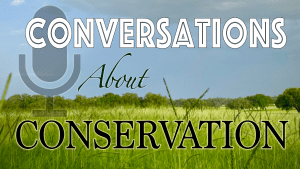
HFF will be holding our Fourth Annual Conservation Summit this fall on November 16 at 5pm to 7pm EST, at the Ocala Breeders’ Sales Arena. We will release further details as the event nears. Please mark your calendar and join us as we continue this very important conversation to help protect what we love most about Marion County – the open spaces and beautiful places.
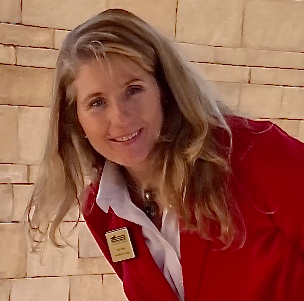
What About Zoning?
The Zoning regulations are found in the Land Development Code, which is a separate document with specific guidelines to implement the Goals, Objectives, and Policies of the Comprehensive Plan.
Zoning regulates development through land use classifications and specifies the areas in which residential, industrial, recreational or commercial activities may take place. The Land Development Code was adopted through a series of ordinances by the County Commission, which means that the regulations cannot be changed or waived, except by a further vote of the County Commission.
Always Watching

We work hard to keep you informed, and to represent our members' interests in preserving our horse farms, farmland and the unique character and culture of Marion County's 193,000 acre Farmland Preservation Area.
Join the herd. Every voice matters.
TDR Receiving Areas
The “receiving area” is designated on the Future Land Use Map, Transfer of Rights, with the majority of the receiving areas located within the Urban Growth Boundary. The Transferrable Development Credits may be transferred to and used on lands identified on the Transfer of Rights Map.
Transferrable Development Credits (TDC) Have Potential Value
If landowners choose to participate in the TDR program, the BOCC must approve the agreement; then the landowner records a conservation easement on the property and receives the TDCs. To help incentivize participation, the County increased the TDCs to one credit per every acre of sending area land preserved in 2007.
Thus, if a private property in the sending area meets the requirements of the TDR program, in exchange for placing a conservation easement on their property, the landowner receives TDCs that can be sold or utilized.
When the TDR program was adopted, the County set a goal of placing conservation easements on 5,000 acres by 2015. As of today, the TDR program protects about 3,200 acres of land.
One of the properties protected by the County’s TDR program is owned by Dick and Sharon Sawallis. In 2007, they voluntarily protected 93 acres of their land, which is part of the scenic view shed of the Orange Lake Overlook on U.S. 441 just south of the Town of McIntosh.
“It’s a gorgeous view when the sun comes up, or the sun goes down over that lake. That’s what I want to preserve and not look at a bunch of houses,” Sharon Sawallis said in the Ocala Star Banner article.
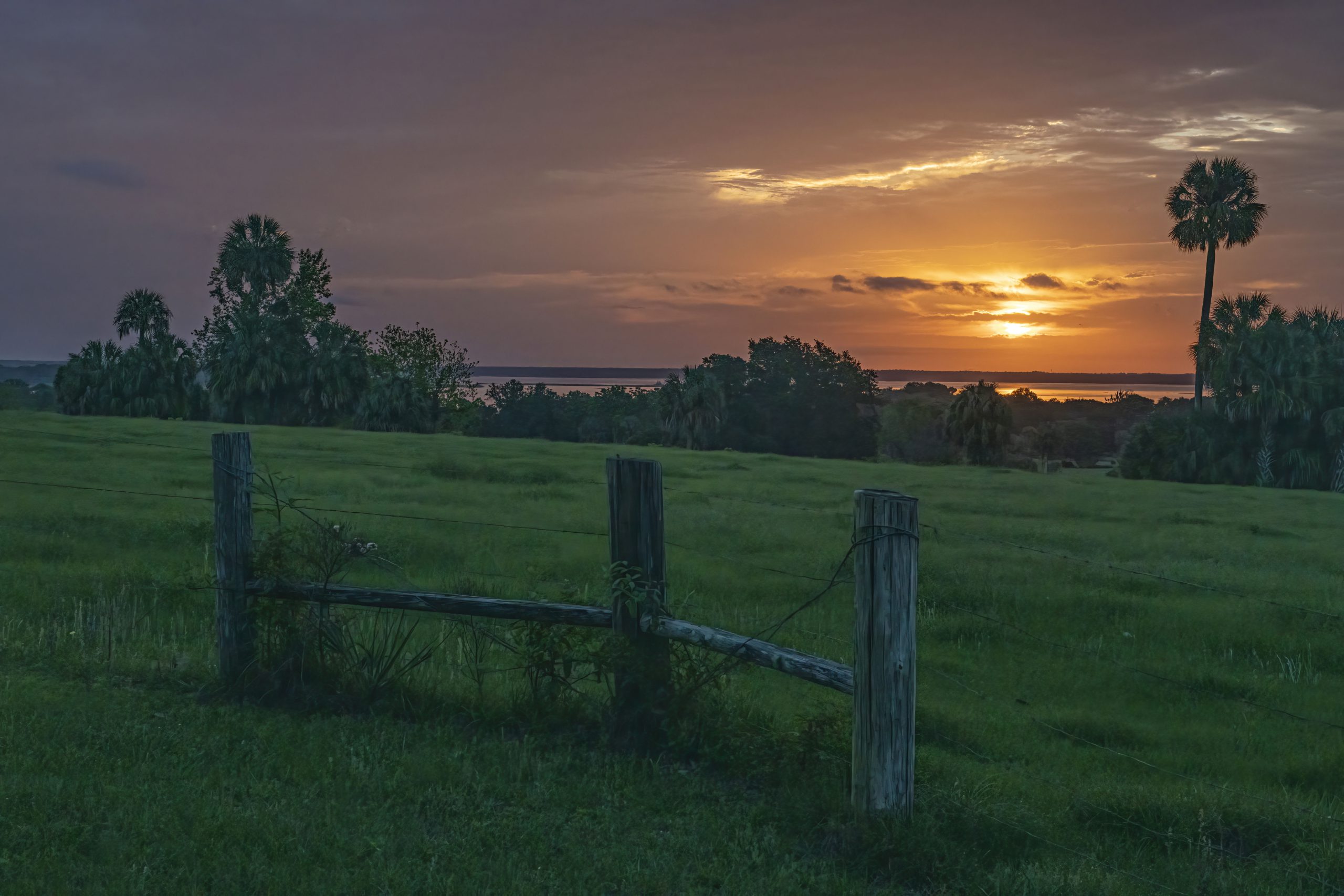
Photo by Sean Dowie
Conservation Easements Protect Land from Development
Due to the exponential growth in Marion County, development pressure to subdivide farms in the FPA and alter the FPA boundaries will continue. And because the land located in the FPA is privately owned, landowners have the right to subdivide their land, as permitted in the Comprehensive Plan and Land Development Regulations, or approved by the Board of County Commissioners.
Marion County’s TDR program is a good start. The program has protected about 3,200 acres of land in the FPA with conservation easements. Conservation easements are an essential step to protect land from development. In order to truly protect horse farms and other agricultural land in the FPA, the solution is voluntary conservation easements. When a landowner places a conservation easement on their property, they decide the future of their property rather than the government or elected officials.
A conservation easement is a voluntary, legally binding agreement between a landowner and a qualified organization, such as a land trust or government entity, that permanently limits uses of the land to protect agricultural, ecological, or other natural and historic resources.
Landowners have rights to their land, such as the ability to subdivide, build homes and barns, cut trees, mine for minerals, and other rights. A conservation easement allows a landowner to retain private ownership while restricting some of those rights to protect the property’s conservation values and preserve the agricultural uses. The easement document will identify the rights that the landowner wishes to retain, limit or forgo. Easements are custom-designed to meet the personal and financial needs of the landowner. An easement may cover portions of a property or the entire parcel. The property remains a private holding and is only open to the public at the owner’s discretion.
Conservation easements can provide peace of mind by protecting land in perpetuity, regardless of who owns it in the future. HFF is happy to help facilitate this conversation and provide resources to interested landowners.
Inspiring Conservation
It is the vision and mission of Horse Farms Forever to inspire conservation of horse farms through education, awareness and idea exchange so as to preserve natural pasture land focusing on horses and their habitats, to protect soil and water on which they depend, and minimize land use conflicts in Marion County.
Horses, horse farms and the horse industry create the character and culture that define Marion County. The aim of Horse Farms Forever is to raise awareness and education to ensure that this sense of place is protected for future generations.
The purpose of Horse Farms Forever is to be watchful of government and others in actions pertaining to the character and culture that horses and the Farmland Preservation Area make unique to Marion County. That includes strategies to preserve horse farms and pastureland, especially in the Farmland Preservation Area, for future generations.
We hope you will join Horse Farms Forever and support our mission.

